|

|
Iris pumila
|
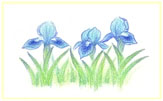
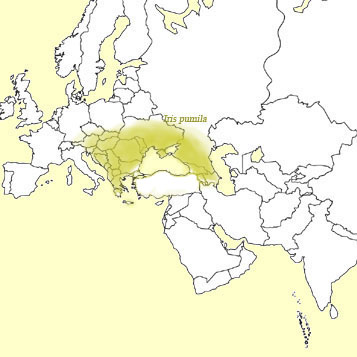 The
32-chromosome tetraploid bearded irises are all members of a single
species, I. pumila (unless one regards the similar I.
taurica and I. alexeenkoi as distinct). This is
among the smallest of all bearded irises, with blooms held only a few
inches above the ground, stemless or nearly so. Its range in nature
is centered on the Ukraine, extending westward to Austria, and
southeastward through Russia to the Caucasus. It has many color
forms, from blue and purple through yellow, cream, and white, usually
with a contrasting spot on the falls. Crosses between I. pumila
and tall bearded irises gave rise to the modern standard dwarfs,
and thus indirectly to most modern IBs and MDBs. The genetic
contribution of the species to the dwarf and median irises of today
has been enormous.
The
32-chromosome tetraploid bearded irises are all members of a single
species, I. pumila (unless one regards the similar I.
taurica and I. alexeenkoi as distinct). This is
among the smallest of all bearded irises, with blooms held only a few
inches above the ground, stemless or nearly so. Its range in nature
is centered on the Ukraine, extending westward to Austria, and
southeastward through Russia to the Caucasus. It has many color
forms, from blue and purple through yellow, cream, and white, usually
with a contrasting spot on the falls. Crosses between I. pumila
and tall bearded irises gave rise to the modern standard dwarfs,
and thus indirectly to most modern IBs and MDBs. The genetic
contribution of the species to the dwarf and median irises of today
has been enormous.
It is reportedly endangered in some areas, at
least in the western part of its range. Certainly plants have become
more difficult to obtain commercially, and the many dozens of
collected clones available to breeders in the 1960s have dwindled to
just a few. Fortunately, a number of named varieties have been
introduced over the years from pure I. pumila breeding, and
several of these are still available (Most were registered as MDBs,
some recent ones as SPEC). Some rock garden nurseries offer plants,
and the species appears regularly in seed exchanges and in the lists
of seed collectors. Seed collection from a number of localities has
also helped increase the range of available forms.
Since there are no other species to expand
the gene pool of this family (the diploids I. attica and I.
pseudopumila (adriatica) are ancestors of I. pumila, and
so presumably carry very similar genes), it is unlikely that further
breeding will expand the range of characteristics seen in the plants.
Nevertheless, it is important to keep a range of garden pumilas
available, both to preserve the species itself, and to use for new
lines of breeding, such as the expansion of the arilpum family.
Growing forms from wild-collected seed from varied locales is
important in maintaining the diversity of the species in cultivation.
My own priority with this species is to collect as many varieties as
I can, and raise pumila seedlings that I can use in breeding
and to make plants and seeds available to other growers and
hybridizers. I'm also selecting for garden qualities that appeal to
me:
vigor in my garden
small, narrow foliage
appealing form (I prefer gently rounded
falls, upright standards, and some width, but also look for the
unusual)
color variations
I've compiled a listing of
Iris pumila
cultivars that may be of use in
building a collection of pumilas.
Progress to Date
I've been obtaining Iris pumila plants
and seeds from various sources each year, as well as growing pumilas
from my own crosses. I probably raise more pumila seedlings each year
than any other single type of iris. It is rewarding to have a number
of different colors and patterns to use in hybridizing each year. In
2019, I began to focus my selections more on small pants with small,
narrow foliage. It is particularly important for MDB breeding that
the pumilas used be small and delicate if the hybrids are to remain
proportionate and in scale. This is true to a lesser extent in
arilbred dwarf breeding, where large pumilas used as parents can push
the seedlings into the arilbred median height range.
Further Reading
Iris
pumila: A Tiny Treasure
(AIS blog)
Dwarfs
for Every Garden
(AIS blog)
The Miniature
Dwarfs: A Hybridizer's Survey of the Class, its History, and its
Potential
Narrated Powerpoint presentation
Dwarf
Bearded Irises: The Three Types of MDBs
on Youtube
Hall of Fame
Carpathia (R. Schreiner). MDB, height
4" (10 cm), Early bloomseason. Standards full yellow; falls
yellow-brown, edged lighter yellow. A Transylvanian (Rumanian) form
of I. pumila from collected seed. Schreiner's.
Nana (R. Schreiner). MDB, 4" (10 cm),
E. red-violet blend; darker spots on F.; bluish beards. A Crimean
(Ukrainian) form of I. pumila from collected seed.
Schreiner's.
Sulina (R. Schreiner, unregistered).
MDB, Height 4" (10 cm), Early bloom season. Deep violet-blue; darker
spots on falls.; blue beards. A Rumanian form of I. pumila
from collected seed. Schreiner's.
This trio of pumilas from collected seed
ushered in the modern era of median breeding. Each had its own
distinctive qualities that contributed to the range of variety in the
early SDBs. Along with Paul Cook's pumila seedling 1546, these
cultivars are behind the ancestry of most modern SDBs, MDBs, and
IBs.
Cretica (Atchley by A.I.S. Directors,
R. 1952). MDB, height 4" (10 cm), Early bloomseason. Smoky pinkish
red-purple; darker spots on falls; lavender beards. A form of I.
pumila found in Crete, 1929.
This iris is quite a mystery, since I.
pumila is not otherwise reported to exist on the island of Crete.
Whatever the source of this clone, its impact on median breeding has
been enormous. 'Cretica', unlike other forms of I. pumila,
does not seem to impede the expression of recessive TB colors and
patterns, such as tangerine pink and plicata. Thus the variety of the
modern medians owes a great deal to its influence.
Little Drummer Boy (A. & D.
Willott, R. 1997). Sdlg. W 94-49. MDB, 4" (10 cm), E. Lightly ruffled
white, large violet F. spot; beards cream. W 91-85: ('Pittance' x W
79-13: (Greenlee GX-2: (('White Mite' x self) x (I. pumila
alba x Hanselmayer)) x 'Buttons')) X W 92-6: (Kuban pumila #205 x
'Daring Eyes'). Willott 1997. Caparne-Welch Medal 2005.
This MDB from pure I. pumila breeding
won the Caparne-Welch Medal in 2005, proving that the potential of
the species to produce superior garden varieties is not exhausted. I
cannot think of any other case (outside the SPEC classification)
where a selected variety of an iris species has secured the top award
for a horticultural class.
Gallery
Various Forms in Commerce
|
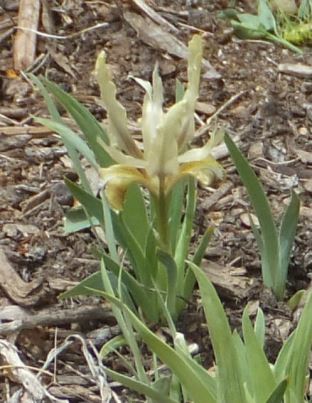
|
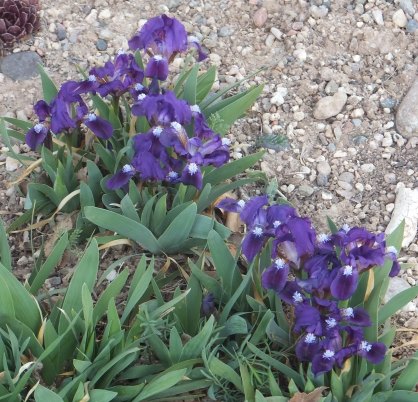
|
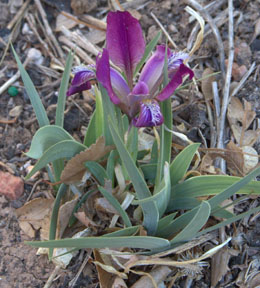
|
|
Iris
pumila aequiloba
|
Iris
pumila (from Wild Ginger Farm)
|
Iris
pumila "clausii"
|
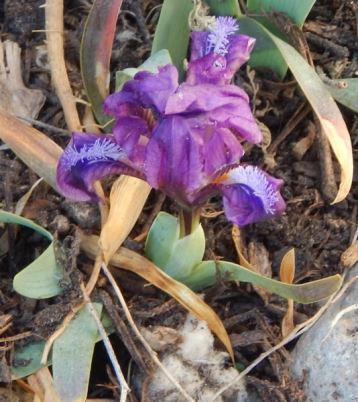
|
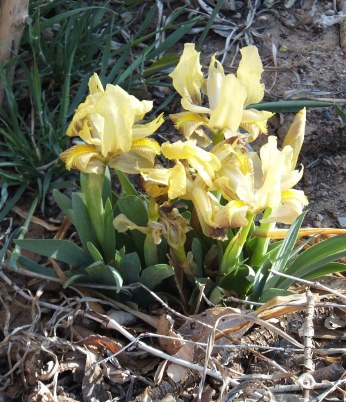
|
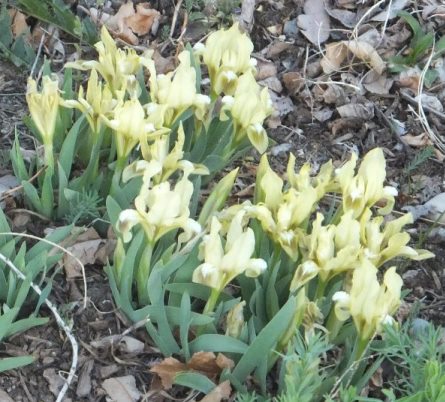
|
|
Iris
pumila ex Moravia
|
Iris
pumila yellow/brown
|
Iris
pumila taurica
|
Forms Raised from Seed
|

|
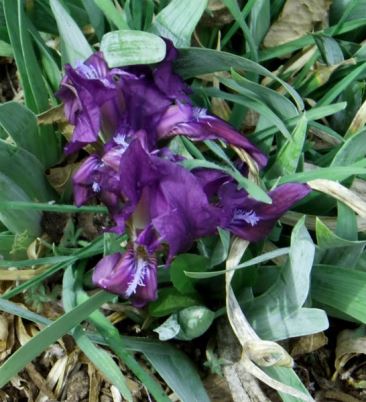
|
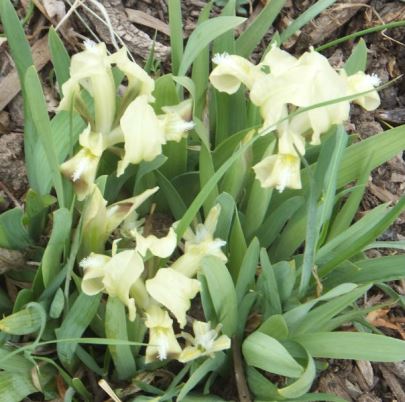
|
|
Iris
pumila Hildenbrandt (SIGNA) 04A004
|
P002-01
Iris pumila ex Sevan Lake, Armenia
|
P002-02
Iris pumila ex Sevan Lake, Armenia
|
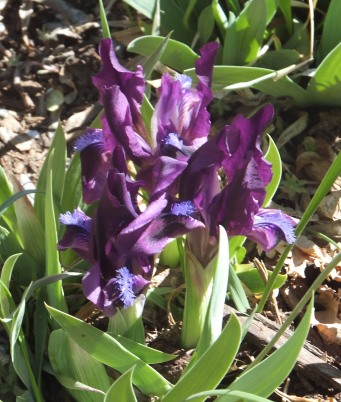
|
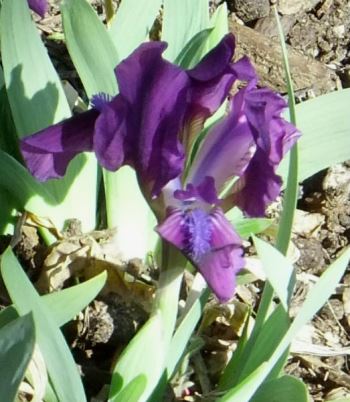
|
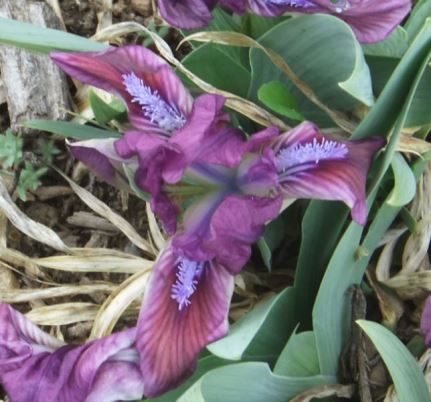
|
P002-03
Iris pumila ex Sevan Lake, Armenia
|
P002-04
Iris pumila ex Sevan Lake, Armenia
|
P002-05
Iris pumila ex Sevan Lake, Armenia
|
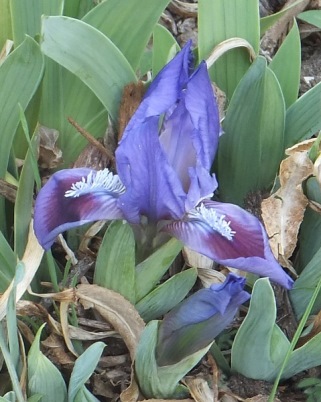
|
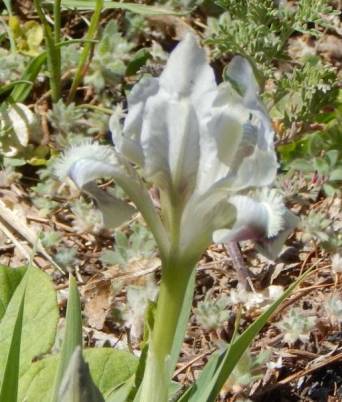
|
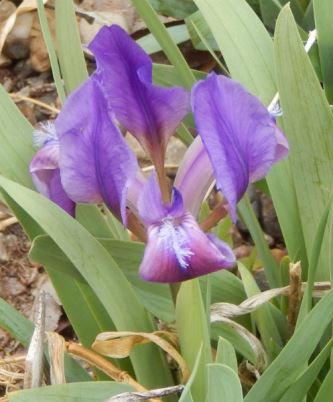
|
P002-06
Iris pumila ex Sevan Lake, Armenia
|
P002-13
Iris pumila ex Sevan Lake, Armenia
|
P002-14
Iris pumila ex Sevan Lake, Armenia
|
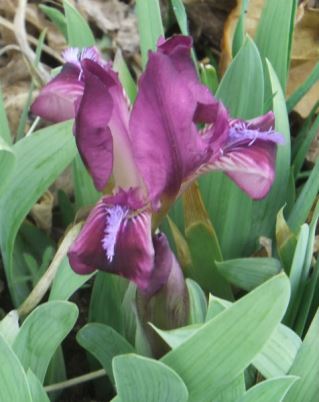
|
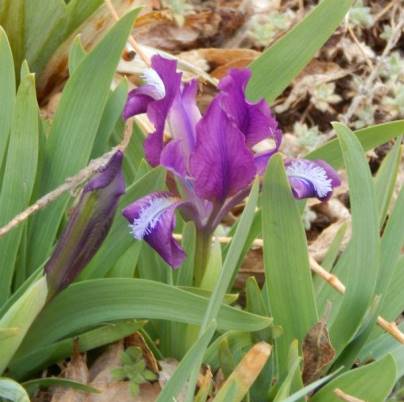
|
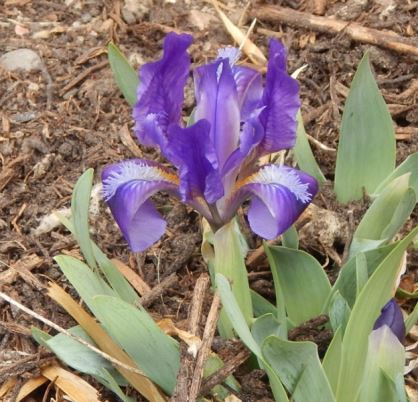
|
P003-01
Iris pumila "taurica blue"
|
P018-01
I. pumila taurica ex Caucasus
|
P018-02
I. pumila taurica ex Caucasus
|
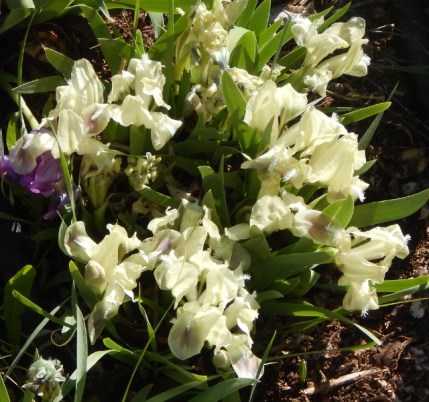
|
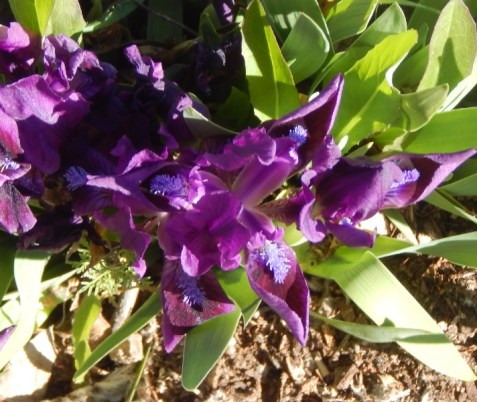
|
|
P042-02
Iris pumila taurica ex Caucasus
|
P050-01
Iris pumila ex Hungary
|
|
Registered Cultivars
|
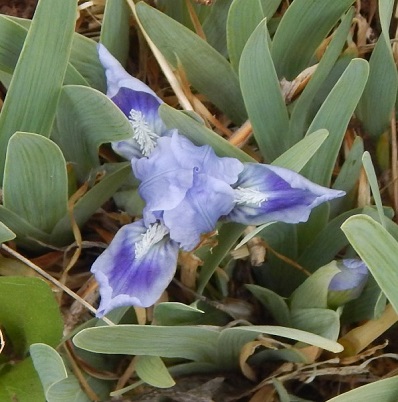
|
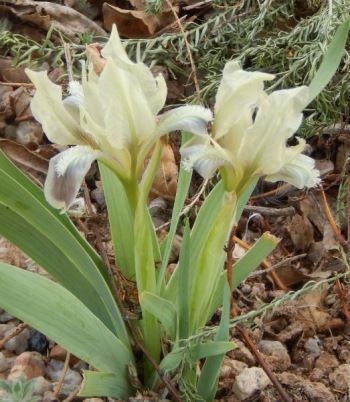
|
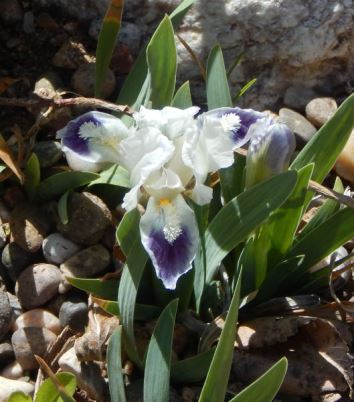
|
'Hobbit'
(Miller, 2004)
|
'Keystone
Oracle'
(Jesberger, 2011)
|
'Little
Drummer Boy'
(Willott, 1997)
|
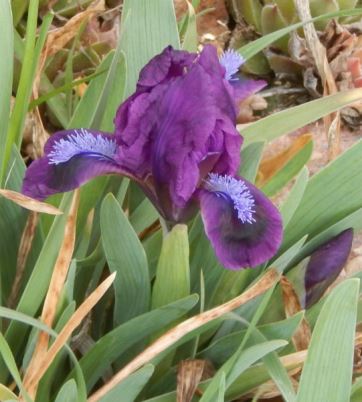
|
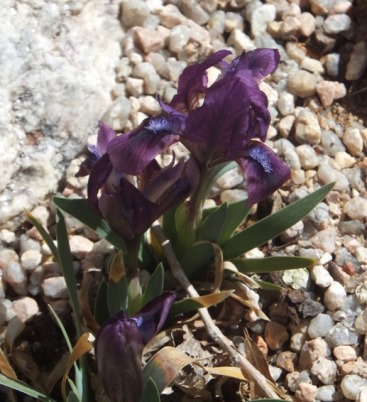
|
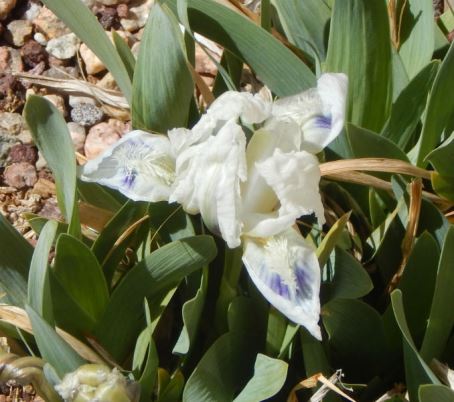
|
'Royal
Wonder'
(Coleman, 2013)
|
'Steppe'
(J. Burton, 2010)
|
'Sudden
Butterflies'
(Jensen, R. 2010)
|
|
|
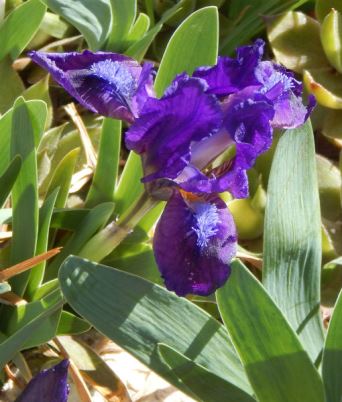
|
|
|
|
'Wild
Whispers'
(Coleman, 2012)
|
|
Tom Waters Seedlings
|
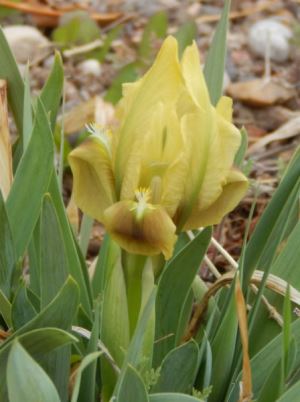
|
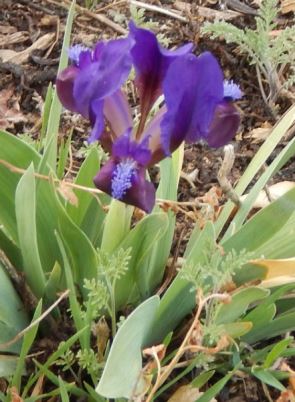
|
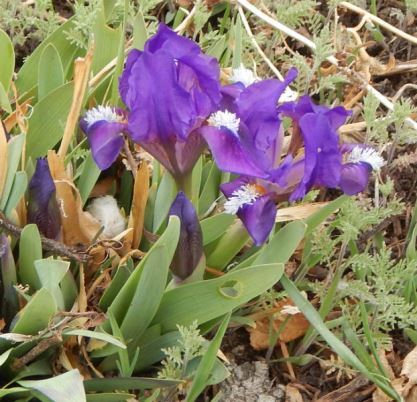
|
P011-02
Iris pumila "clausii" X Iris pumila
aequiloba
|
P019-04
Iris pumila (from Wild Ginger Farm) X Hildenbrandt
(SIGNA) 04A004
|
P022-04
'Wild Whispers' X Iris pumila (from Wild Ginger Farm)
|
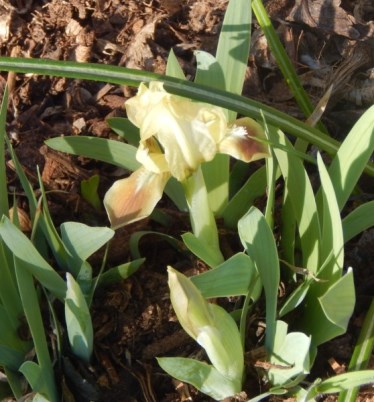
|
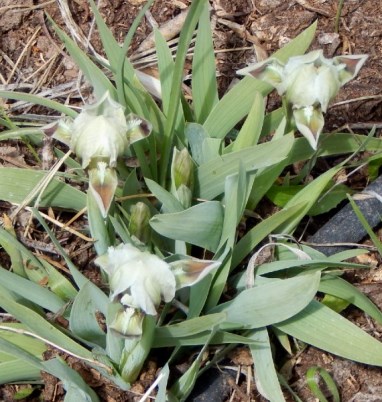
|

|
P033-01
P002-06 (ex Armenia) X Hildenbrandt (SIGNA)
04A004
|
P033-03
P002-06 (ex Armenia) X Hildenbrandt (SIGNA)
04A004
|
P051-01
'Hobbit' X P003-01 ("taurica blue")
|
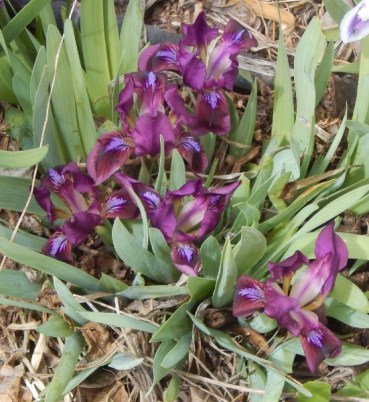
|
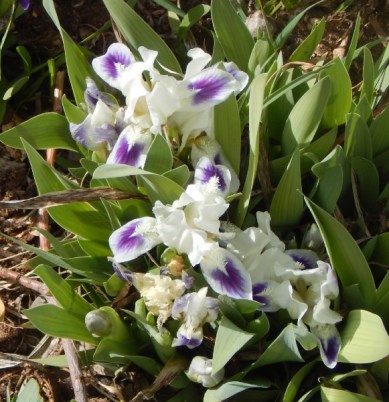
|
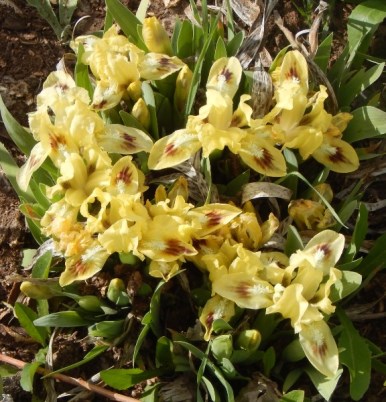
|
P051-07
'Hobbit' X P003-01 ("taurica blue")
|
P053-07
'Little Drummer Boy' X 'Sudden Butterflies'
|
P053-08
'Little Drummer Boy' X 'Sudden Butterflies'
|
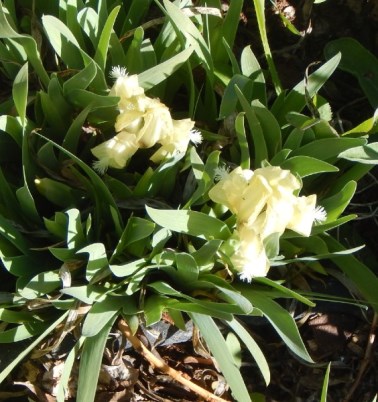
|
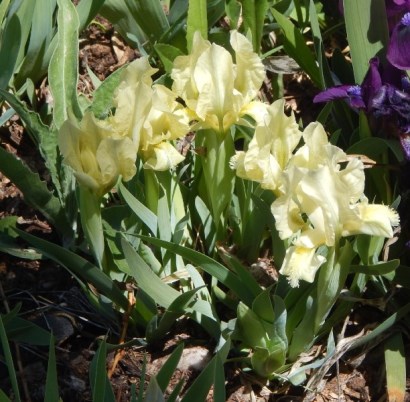
|
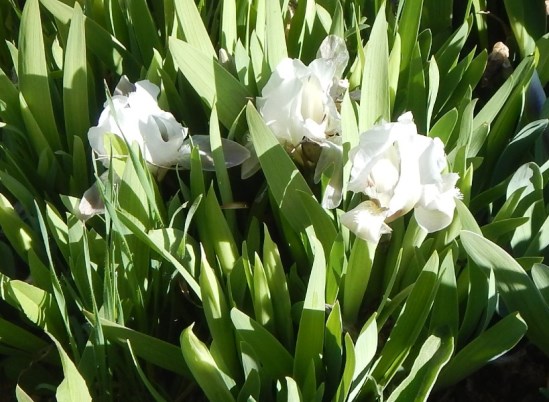
|
P054-04
P002-13 (ex Armenia) X unknown
|
P054-13
P002-13 (ex Armenia) X unknown
|
P054-14
P002-13 (ex Armenia) X unknown
|
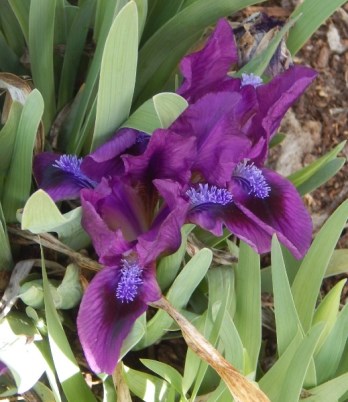
|

|
|
Q037-01
'Royal Wonder' X unknown
|
Q037-02
'Royal Wonder' X unknown
|
|
Plant List
The list below shows the name of each plant I
currently grow, the source, and the year acquired.
Illustration:
'Hobbit' (Miller '04): an MDB from pure I. pumila
breeding.
Tom
Waters
September 2010
updated March
2020
Unless otherwise noted, all text
and illustrations copyright Tom Waters and all photographs copyright
Tom or Karen Waters. Please do not reproduce without
permission.

 The
32-chromosome tetraploid bearded irises are all members of a single
species, I. pumila (unless one regards the similar I.
taurica and I. alexeenkoi as distinct). This is
among the smallest of all bearded irises, with blooms held only a few
inches above the ground, stemless or nearly so. Its range in nature
is centered on the Ukraine, extending westward to Austria, and
southeastward through Russia to the Caucasus. It has many color
forms, from blue and purple through yellow, cream, and white, usually
with a contrasting spot on the falls. Crosses between I. pumila
and tall bearded irises gave rise to the modern standard dwarfs,
and thus indirectly to most modern IBs and MDBs. The genetic
contribution of the species to the dwarf and median irises of today
has been enormous.
The
32-chromosome tetraploid bearded irises are all members of a single
species, I. pumila (unless one regards the similar I.
taurica and I. alexeenkoi as distinct). This is
among the smallest of all bearded irises, with blooms held only a few
inches above the ground, stemless or nearly so. Its range in nature
is centered on the Ukraine, extending westward to Austria, and
southeastward through Russia to the Caucasus. It has many color
forms, from blue and purple through yellow, cream, and white, usually
with a contrasting spot on the falls. Crosses between I. pumila
and tall bearded irises gave rise to the modern standard dwarfs,
and thus indirectly to most modern IBs and MDBs. The genetic
contribution of the species to the dwarf and median irises of today
has been enormous.








































